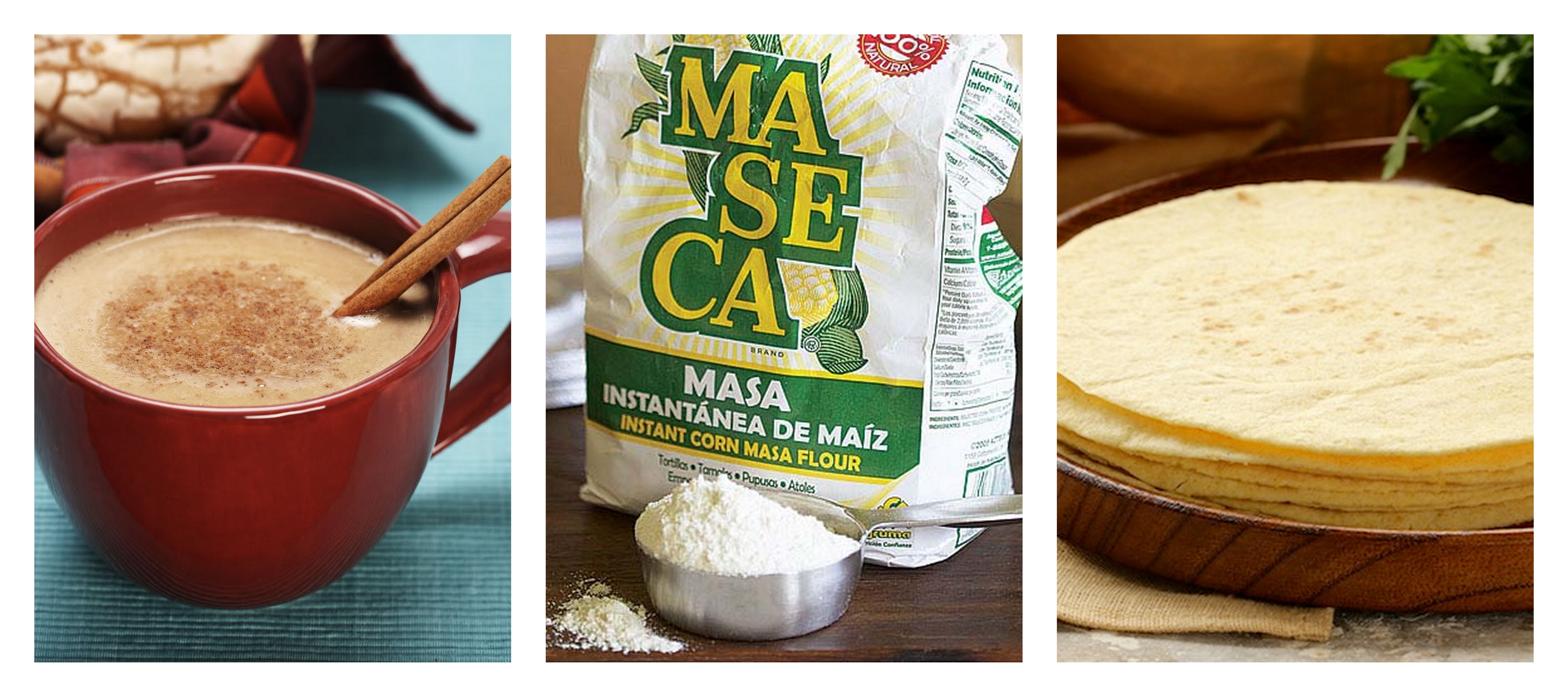
Looking for a healthier flour that’s gluten free and rich in nutrients like calcium and vitamin B? Try masa, a traditional Central American corn flour. Grains typically contain toxins and nutrients that are relatively difficult for your body to utilize. However, the nutritional quality of grain-based foods can be significantly improved with good processing. The fermentation process used to make sourdough bread from wheat is one great example. The Alkaline cooking method used to make masa flour is also excellent. To avoid the downsides of grain consumption, try masa: the healthy flour.
How is Masa Made?
Masa harina (masa flour) is made using a method called nixtamalization, or Alkaline cooking. Nixtamalization is the processing of corn in a warm bath of Alkali, a calcium hydroxide molecule derived from burnt limestone or wood ash. During this process, the Alkali molecule interacts with the corn in a way that improves its nutritional quality in many ways. This method of corn conditioning has been used for over 3,000 years. It originated in Central America as a way to improve the health of populations that rely on corn as a staple. I suggest it simply as an opportunity to enjoy some of the more delicious and pleasing foods, like breads and desserts, without compromising your health.
Benefits of the Nixtamalization Process
The nixtamalization (Alkaline cooking) process is highly beneficial for the following reasons:
- It reduces phytic acid content.1
- It reduces mycotoxin content.2
- It improves protein quality (the loss of protein in the processing is primarily the amino acid tryptophan, which is often too abundant in the adult diet).3
- It increases calcium, zinc, potassium, and magnesium (calcium is increased more with limestone, while the others are increased more with wood ash).4
- It increases the availability of B vitamins, especially niacin.5
- It conditions the starch granules, making them easier to digest.6
Cooking with Masa
Masa flour can be used to make healthy breads, tortillas, cakes, and more! If you’d like to try cooking with masa flour, the first step is to either buy it or learn how to make it yourself. Good masa can be bought cheaply; however, the best source I have found is Barry Farm Foods. When shopping for masa, try to avoid added binding agents, such as xanthan gum, which compromise the nutritional quality of the flour. If you prefer to make it yourself, follow this link for instructions on how to make corn masa using powdered lime (i.e. calcium hydroxide). Or click here to learn how to make masa using wood ash. Chef Mike’s blog also has some good info on making masa with wood ash.
Stay tuned for my upcoming post featuring a video on how to make a thin pizza crust from masa and a kid-friendly, gluten-free pizza recipe!
Beware that once foods have been baked or fried (especially if they’ve been fried), the beneficial modification of the starches is reduced. So, nutritionally, perhaps the best way to consume masa is by drinking Atole, a traditional holiday beverage. Click here for a good Atole recipe. You can substitute the traditional Mexican sugar cones in the recipe with regular sugar or honey.
While I don’t think masa should be your primary source of nutrition, it is an optimal complement to a healthy diet that’s low in PUFAs and high in fruits and whole foods.
Enjoy learning about health from a scientific perspective? Want more info on the latest topics in nutrition and fitness? Sign up for my newsletter!
References
- Bressani R, Turcios JC, Colmenares de Ruiz AS, de Palomo PP. Effect of processing conditions on phytic acid, calcium, iron, and zinc contents of lime-cooked maize. J Agric Food Chem 52, No. 5 (Mar 2004): 1157-1162. http://www.ncbi.nlm.nih.gov/pubmed/14995114
- Dombrink-Kurtzman MA, Dvorak TJ, Barron ME, Rooney LW. Effect of nixtamalization (Alkaline cooking) on fumonisin-contaminated corn for production of masa and tortillas. J Agric Food Chem 48, No. 11 (Nov 2000): 5781-5786. http://www.ncbi.nlm.nih.gov/pubmed/11087554
- Cuevas-Martínez D, Moreno-Ramos C, Martínez-Manrique E, et al. Nutrition and texture evaluation of maize-white common bean nixtamalized tortillas. Interciencia 35, No. 11 (Nov 2010): 828-832. http://www.interciencia.org/v35_11/828.pdf
- Pappa MR, de Palomo PP, Bressani R. Effect of lime and wood ash on the nixtamalization of maize and tortilla chemical and nutritional characteristics. Plant Foods Hum Nutr 65, No. 2 (Jun 2010): 130-135. http://www.ncbi.nlm.nih.gov/pubmed/20369297
- Wall JS, Carpenter KJ. Variation in availability of niacin in grain products. Food Technology (Oct 1988): 198-204. http://naldc.nal.usda.gov/download/23799/PDF
- Gomez MH, Lee JK, McDonough CM, et al. Corn starch changes during tortilla and tortilla chip processing. Cereal Chem 69, No. 3 (1992): 275-279. http://www.aaccnet.org/publications/cc/backissues/1992/documents/69_275.pdf







